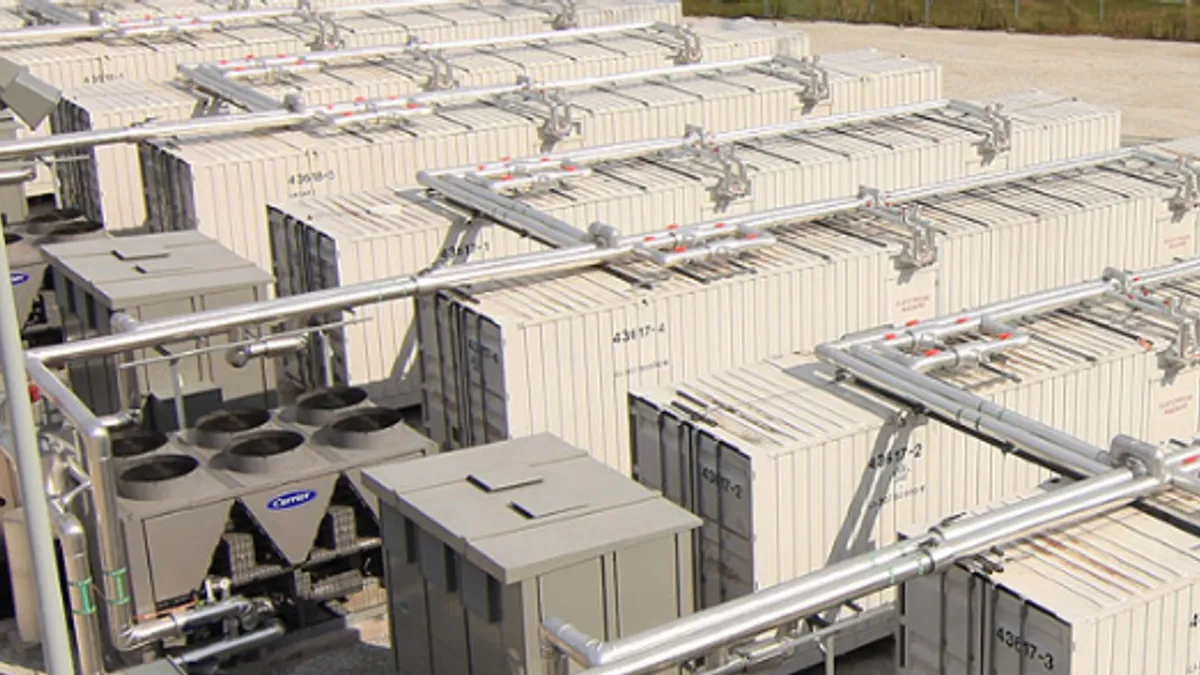Non-traditional energy storage markets showed the strongest growth in the second quarter, at least in front-of-the meter storage deployment. That and a recent White House announcement of private and public commitments to the technology are major factors for second quarter's vibrant showing, according to a report from GTM Research.
Energy storage deployments showed only a slight year-over-year gain in the second quarter but a big jump from the preceding quarter, the report said.
The report says the U.S. is on track to deploy 287 MW by year end compared with 226 MW deployed in 2015. By 2021, GTM expects the U.S. storage market to be over 2,100 MW.
That outlook is up about 3%, or 167 MW, from previous estimates, says Ravi Manghani, director of storage at GTM. “Most of that increase is in 2017 and 2018, with the outlook for 2016 up by 6 MW, as well,” he says.
The report notes that in the second quarter 41.2 MW of energy storage devices were deployed in the U.S., a 1% increase over the same period last year. But compared with the previous quarter the gain was substantial. There was a 126% gain from the 18.3 MW installed in the first quarter.
The steep drop off in deployments in the first quarter is stark in comparison with fourth quarter 2015 when 92 MW of storage projects entered service in the PJM Interconnection region as developers rushed to beat an interim cap the RTO imposed on storage for frequency regulation. Subsequently the first quarter saw a 27% decline in the non-residential market.
The biggest quarter-to-quarter gains came from the front-of-the-meter segment, which tripled from the first quarter to the second quarter.
Manghani attributed the gain to “further thawing of state and ISO regulations on storage.” In that respect, it is noteworthy that the biggest front-of-the-meter gains were not in the two traditionally strong markets, the PJM Interconnection or California, but in Indiana where Indiana Power & Light went online with a 20 MW device.
And in Ohio, a 7 MW storage system in Minster, a joint venture of Half Moon Ventures and the local municipality, went online.
The report noted that PJM territory and California accounted for only 35% the megawatt capacity and 47% of megawatt-hour capacity deployed in the quarter, their lowest contribution in more than three years.
California out to reclaim No. 1
However, California is on track to reclaim its position as the nation’s top storage market, as several megawatts of storage are expected to come online in response to the state’s call for storage solutions to help capacity issues related to the Aliso Canyon methane gas leak.
In August, the California Public Utilities Commission approved two energy storage projects proposed by San Diego Gas & Electric, a 30 MW and a 7.5 MW installation, that are expected online early in 2017. And in September, Southern California Edison awarded Tesla contracts to supply 20 MW (80 MWh) of storage capacity at SoCal Ed’s Mira Loma substation near San Bernardino.
SoCal Ed is also building a 20 MW storage installation at its Pomona facility in the east Los Angeles Basin.
In the absence of the Aliso Canyon projects, storage growth for the country might have been flat, Manghani said. But the success of the projects and their rapid deployment is being closely watched by a lot of states looking for proof of concept for energy storage, he said. Those projects “could embolden other states to follow suit,” Manghani said.
Manghani expects about 220 MW of storage facilities to be installed between July 1 and year end, a lot of them related to Aliso Canyon.
The second quarter was also notable because for the first time California was surpassed in the residential deployments. GTM only breaks out deployment data for California and Hawaii. In the second quarter, the other 48 states top both California and Hawaii in terms of residential storage. That indicates that the storage market is diversifying, Manghani says. For instance, he notes that the residential storage markets in Utah and Vermont are beginning to see deployments.
Massachusetts could also become a more active site for storage deployments as the state’s recently passed legislation could make the state one of only three to have a storage mandate.A recent report from the state’s Department of Energy Resources recommended that the mandate could be set as high as 600 MW. Stakeholder meetings on the matter are scheduled for next month.
On the national level, Manghani said the storage industry received a big boost when the White House announced public and private commitments that will result in 1,300 MW of new storage deployments and spur a billion dollars in storage investments.
“After record-breaking deployments in 2015, the energy storage industry is on pace to grow another 30% this year, increasing grid flexibility, efficiency and resiliency along the way,” Matt Roberts, executive director of the Energy Storage Association, told GTM.






















